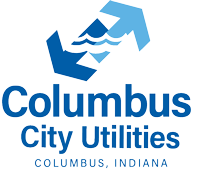A grease trap is a small reservoir built into the wastewater piping, a short distance from the grease producing area. Baffles in the reservoir retain the wastewater long enough for the grease to congeal and rise to the surface. These small devices need to be cleaned often, from daily to weekly, and this is normally done by restaurant staff. Some plumbing and septic hauling companies also offer grease trap cleaning services.
A grease interceptor is typically a concrete vault with a minimum capacity of 750 gallons. It is connected to the restaurant plumbing and is located below the ground and outside the building. The interceptor capacity allows for enough retention time for the suspended fats, oils and grease to congeal and rise to the top. Periodically, a service contractor will pump the accumulated grease and other food waste out of the receptor to maintain its efficiency.
YES! Facilities that prepare and serve food produce fats, oils, and grease need a grease removal device. Grease interceptors are the preferred grease removal device of the Columbus City Utilities for a number of reasons:
- They are larger, providing more retention time for the grease to congeal and separate from the wastewater.
- Some of these devices can accept discharge from dishwashing machines and food grinders.
- Grease interceptors are located outside and are less likely to create offensive odors inside the restaurant.
- They are cleaned by outside contractors every 30 to 90 days, eliminating the need to depend on staff to maintain the device.
Indoor grease traps can be effective in certain applications, but must be maintained frequently and can’t be connected to some commons kitchen fixtures and equipment. For example, grease traps cannot be connected to food grinders or dishwashing machines. Grease traps are appropriate for small, low volume restaurants with limited dishwashing and kitchen equipment.
If you operate a non-residential facility that prepares and serves food, you need a grease removal system. Do not wait until you experience problems with block lines or sewer backups at your facility. You can contact the Columbus City Utilities to learn how to become compliant.
There may already be a grease trap or interceptor installed at your facility of which you are not aware. There are also some simple steps that can be done that will significantly reduce or eliminate FROG from entering your plumbing system.
There is a 25% standard rule for determining acceptable levels of waste that accumulate in your grease trap or interceptor. This means when the trap or interceptor has accumulated waste accounting for 25% of its wetted depth, the device needs to be cleaned.
Businesses may find that preventing FROG from entering their plumbing systems and City sewers will save money by reducing plumbing related problems.
Establishments that fail to comply with the Columbus City Utilities FROG management policy by discharging FROG to the City sewers could be required to install additional grease removal equipment or may be fined for non-compliance.
Does your facility cook meat, serve soups, or salad dressing? Do you use butter, margarine, or oil in food preparation? Do you dispose of rags during food prep or clean up? Fats, rags, oils, and grease (FROG) are abundant around, in, and on the foods we eat.
When foods are prepared, oils and greases are cooked out of the food or added as ingredients or non-stick remedies. The FROG ends up on cookware, dishwater, kitchen equipment, and floors. During the cleaning of the equipment and floors, the FROG can enter the plumbing system. Shortly after this occurs, the FOG begins to cool and separate from the dishwater. After separation, the FROG will begin to accumulate in the building piping system and the public sewers. It is no coincidence that plumbers are called frequently to restaurants to unclog blocked lines.
